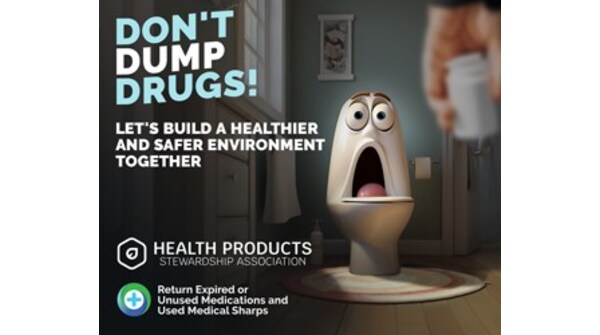In the shadow of mounting environmental concerns, Quebec’s progress toward implementing comprehensive safe disposal practices for health products remains troublingly sluggish, according to a new province-wide survey released yesterday. Despite commendable initiatives from certain municipalities, the disjointed approach to pharmaceutical waste management continues to pose significant environmental and public health risks across the province.
The survey, conducted by the Environmental Health Coalition of Quebec, reveals that only 37% of Quebec residents are aware of proper disposal protocols for prescription medications, compared to 58% in neighboring Ontario. This awareness gap translates directly into concerning disposal practices, with approximately 22,000 kilograms of unused pharmaceuticals being flushed down toilets or thrown into regular garbage bins annually in Quebec alone.
“What we’re seeing is a fragmented system where responsibility is unclear,” explains Dr. Marie Belanger, environmental toxicologist at the University of Montreal. “Pharmaceutical compounds are increasingly detected in our waterways, yet we lack a unified provincial framework to address this growing problem.”
The findings come at a critical juncture as Quebec approaches its 2025 deadline for implementing the Green Pharmacy Initiative, which aims to establish standardized collection systems across all pharmacies in the province. However, progress has been markedly uneven. While metropolitan Montreal has achieved nearly 85% pharmacy participation in take-back programs, rural regions report participation rates as low as 22%.
Particularly concerning is the disposal of controlled substances and liquid medications, which require specialized handling. The survey indicates that 63% of Quebec pharmacies lack proper protocols for these products, creating significant environmental vulnerability.
“The environmental impact is substantial,” notes environmental engineer Jean-Philippe Moreau. “Compounds like antibiotics, hormones, and analgesics are increasingly detected in Quebec’s water systems, with potential long-term consequences for aquatic ecosystems and potentially human health.”
Budget constraints remain a primary obstacle, with the provincial allocation for pharmaceutical waste management programs having increased by only 8% since 2020, significantly below the recommended 25% increase outlined in the original Green Pharmacy roadmap. This underfunding has delayed infrastructure development crucial for effective collection and disposal systems.
The pharmaceutical industry’s participation also varies dramatically. While some manufacturers have established robust take-back initiatives and contributed to public awareness campaigns, others have been notably absent from these environmental responsibility efforts.
Municipal leadership has emerged as a bright spot amid these challenges. Quebec City‘s innovative “Medicine Cabinet Cleanup” program saw remarkable success, collecting over 3,400 kilograms of unused medications in 2023 alone. Similarly, Sherbrooke’s partnership between local pharmacies and waste management facilities has created an efficient collection network that could serve as a model for other regions.
Looking ahead, environmental advocates are calling for accelerated implementation of provincial standards before the 2025 deadline. Proposed measures include mandatory participation of all pharmacies in take-back programs, standardized disposal protocols across healthcare facilities, and enhanced public education campaigns.
As Quebec grapples with this environmental health challenge, the fundamental question remains: Will the province prioritize the necessary resources and regulatory framework to prevent thousands of kilograms of pharmaceutical compounds from contaminating its waterways and ecosystems before the 2025 deadline expires? The current trajectory suggests this environmental protection goal may remain frustratingly out of reach.










